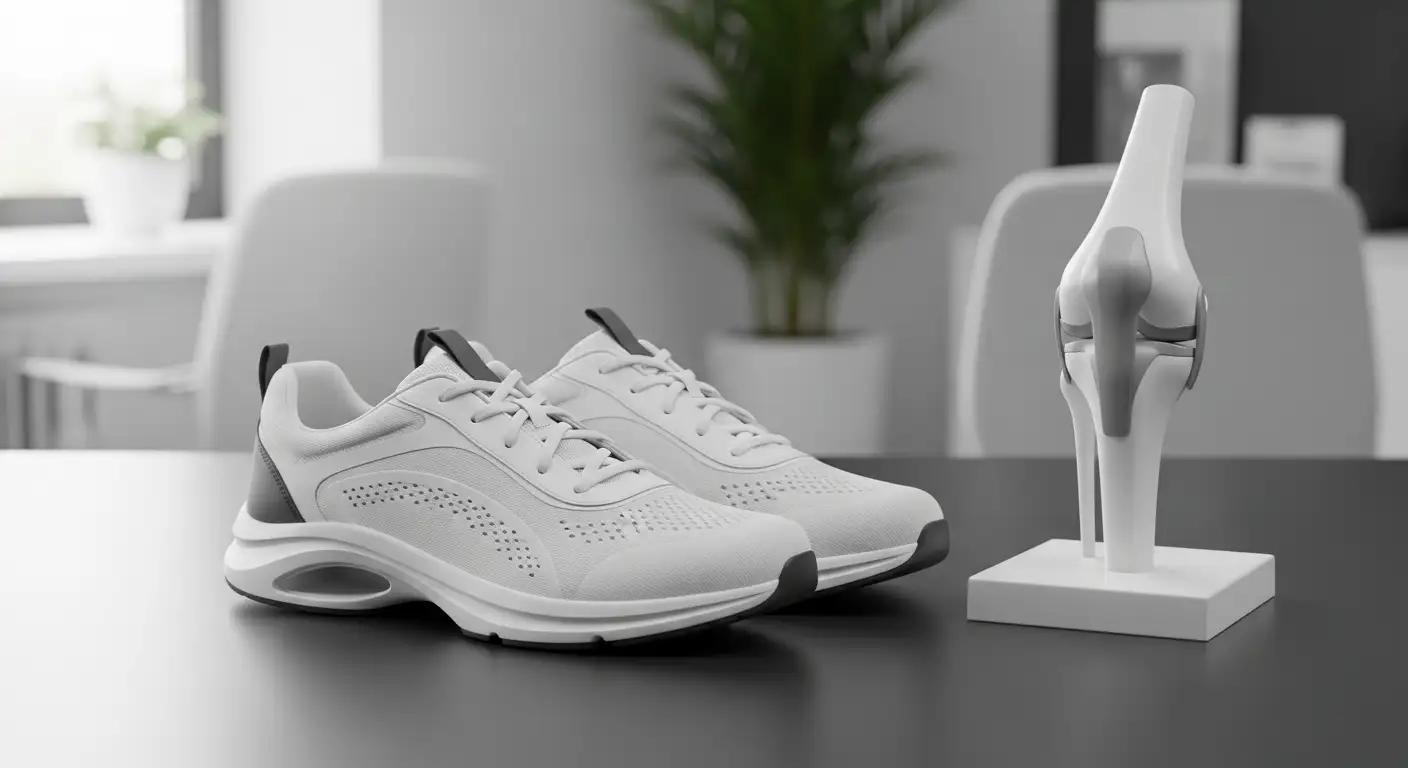Understanding Knee Braces
When dealing with knee pain or injuries such as patellofemoral pain syndrome (PFPS), knee braces often come into the conversation as a potential remedy. But what role do these orthoses play, and what types are available?
Role of Knee Braces
Knee orthoses, including braces, sleeves, straps, or bandages, are commonly used as a treatment for PFPS. They are often used alone or combined with other treatments like exercise or medication. The main goal of employing a knee brace is to help reduce knee pain and improve function.
However, it's important to consider that the effectiveness of knee orthoses in treating PFPS is still a subject of debate. The available evidence supporting their use is of very low quality, and the results are uncertain [1]. Some studies even suggest that knee orthoses did not reduce knee pain or improve knee function in the short term (under three months) in adults with PFPS who were also undergoing an exercise program.

Therefore, it's crucial to understand that knee braces are not a standalone solution but can be a part of a comprehensive treatment approach that may also involve physical therapy and medication.
Types of Knee Braces
There are several types of knee braces available, each designed to address specific needs or conditions. Here are a few common types:
- Functional Braces: These are designed to offer support to knees that have been previously injured.
- Rehabilitative Braces: These are used to limit harmful knee movement while a knee injury is healing.
- Prophylactic Braces: These are designed to protect knees from injuries during contact sports like football.
- Unloader/Offloader Braces: These are designed to provide relief to people who have arthritis in their knees.
When searching for "what is the best knee brace for patellofemoral syndrome," it's essential to understand that the "best" brace is subjective and depends on individual needs, comfort, and the specific characteristics of their knee condition. Consulting with a healthcare professional or a brace fitter can provide helpful guidance.
Effectiveness of Knee Braces
Understanding the effectiveness of knee braces in managing knee pain, particularly in cases of patellofemoral pain syndrome (PFPS), requires a consideration of research findings and a closer look at the use of knee orthoses for this condition.
Research Findings on Knee Braces
Surprisingly, there is a lack of evidence to support the use of knee orthoses (knee braces, sleeves, straps or bandages) for treating PFPS. The available data suggests that knee orthoses did not reduce knee pain or improve knee function in the short term (under three months) in adults who were also undergoing an exercise program for treating PFPS.
Data courtesy: PubMed
However, it's important to note that these results may not apply to everyone, and individual responses can vary.
Use of Knee Orthoses for PFPS
Knee orthoses are worn over the knee and are thought to help reduce knee pain in patients with PFPS. They can be used in isolation or in addition to other treatments such as exercise or non-steroidal anti-inflammatory medications.
While the research findings may not endorse the use of knee braces for treating PFPS, there are specific knee braces that have shown positive results. For instance, a published report in the Open Journal of Therapy and Rehabilitation highlighted that the REACTION WEB knee brace reduces knee pain, increases function, enhances quality of life, and is effective in conservative care for individuals with patellofemoral pain syndrome.
This underscores the importance of selecting the right knee brace based on the specific needs and recommendations of healthcare professionals. It also highlights the need for further high-quality research to inform the use of knee orthoses for treating PFPS.
Best Knee Braces for PFPS
In the quest to figure out what is the best knee brace for patellofemoral syndrome, several options stand out. Here are three knee braces that are highly recommended for individuals suffering from PFPS.
REACTION WEB Knee Brace
The REACTION WEB knee brace is a top choice for individuals with patellofemoral pain syndrome. According to a published report in the Open Journal of Therapy and Rehabilitation, this brace reduces knee pain, increases function, enhances quality of life, and is effective in conservative care for individuals with PFPS [3].
The innovative web design of the brace works to absorb shock, disperse energy, and shift pain away from the knee. It comes in various sizes, making it an accessible choice for many.
Corflex U-Shaped Patella Stabilizer
The Corflex U-Shaped Patella Stabilizer is another highly recommended brace for PFPS. It is particularly beneficial for individuals suffering from patella subluxation, patellofemoral tracking syndrome, patella alta/baja, and patella tendon injuries [4].
Made from premium grade latex-free neoprene material, this brace offers excellent support and comfort. It comes in various sizes, ensuring a proper fit for all individuals.
FX® Patella Stabilizer
The FX® Patella Stabilizer is specifically designed to help with patella maltracking and patellofemoral syndrome, providing increased coronal plane control. It is suitable for various conditions such as patellofemoral pain syndrome, patellofemoral stress syndrome, patellar tendinopathy, and more [4].
This brace offers an ideal blend of support and comfort, allowing individuals to engage in daily activities with minimal discomfort. It comes in sizes ranging from XS to XXL, accommodating a wide spectrum of individuals.
Each of these braces holds its own merits, and the decision ultimately relies on individual needs and circumstances. It's recommended to consult with a medical expert or brace fitter when choosing a knee brace for patellofemoral syndrome.
Considerations for Choosing a Knee Brace
The process of choosing the best knee brace for patellofemoral syndrome involves considering individual needs and consulting professionals for guidance. This section provides insights on the factors to consider and the benefits of consulting a brace fitter.
Factors to Consider
When selecting a knee brace for patellofemoral pain syndrome, there are several factors to consider. It's important to note that knee braces, sleeves, straps, or bandages are commonly used orthoses for treating this condition. These orthoses help reduce knee pain and can be used alone or combined with other treatments such as exercise or medication.
However, it's also crucial to understand that there is a lack of evidence supporting the use of knee orthoses for treating PFPS. The available evidence is of very low quality, and the results are uncertain. This makes it even more important to carefully consider the following factors while selecting a knee brace:
- Comfort: The knee brace should be comfortable to wear for extended periods, without causing irritation or discomfort.
- Fit: A well-fitting brace is essential to ensure that it provides adequate support and does not slip or move around.
- Material: The material of the brace should be durable and breathable to ensure long-lasting use and comfort.
- Ease of Use: The brace should be easy to put on and remove.
- Support: The brace should provide the necessary support to the knee and help alleviate the symptoms of PFPS.
Consulting a Brace Fitter
Given the complexities involved in selecting a suitable knee brace, it is advisable to consult a professional brace fitter. A brace fitter can provide expert guidance on the appropriate brace based on individual needs and circumstances.
A brace fitter can evaluate your specific condition, consider your lifestyle and activity level, and suggest a brace that fits well, provides adequate support, and meets your specific needs. This personalized approach can enhance the effectiveness of the brace, potentially improving symptom management and quality of life.
In summary, while choosing a knee brace for patellofemoral syndrome, both personal considerations and professional advice play vital roles. It's crucial to find a comfortable, well-fitting brace that meets individual needs, and consulting a brace fitter can be incredibly beneficial in this process.
Treatment Approaches for PFPS
Patellofemoral pain syndrome (PFPS) is a common condition characterized by pain in the front of the knee while performing deep knee bends. The optimal treatment for PFPS involves a combination of different strategies including physiotherapy, the use of foot orthotics, and wearing the appropriate knee brace.
Physiotherapy for Muscle Weakness
Physiotherapy is a critical component of PFPS treatment. It addresses muscle weakness or tightness, which are often contributors to knee pain. A physiotherapist can develop a tailored exercise program to strengthen the muscles around the knee joint, particularly the quadriceps and hip muscles. This approach can help improve knee function and reduce pain.
Physiotherapy also often includes stretching exercises to improve flexibility and joint mobility. Stretching the hamstring and calf muscles can help alleviate tension and pressure on the knee. Remember, it's essential to perform these exercises under the guidance of a qualified physiotherapist to ensure they're done correctly and safely.
Foot Orthotics for Poor Mechanics
Foot orthotics are another treatment option for PFPS, especially when poor foot mechanics contribute to knee pain. These specially designed shoe inserts can help correct biomechanical issues, such as overpronation or flat feet, which can place extra stress on the knees. By providing additional arch support and cushioning, orthotics can enhance foot alignment and function, reducing the strain on the knee joint.
In addition to custom orthotics, supportive footwear is also important. Shoes with good arch support and cushioning can help reduce the impact on the knee when walking or running. Consider consulting a podiatrist or orthotist for personalized advice on the best orthotics and footwear for your specific needs.
It's important to note that while physiotherapy and foot orthotics can be effective, they are often most beneficial when used in conjunction with other treatment methods like patellofemoral knee bracing. A comprehensive approach to treating PFPS can provide the best outcomes, helping to control kneecap movement and alleviate knee pain.
Managing Patellofemoral Pain
Dealing with patellofemoral pain involves understanding the symptoms, as well as knowing the various support measures available. This includes the use of patellar tendon straps and soft knee braces.
Symptoms of PFPS
Patellofemoral knee pain is a common condition, with the patellofemoral compartment being at least partially to blame for symptoms in 63% of the population [6]. The most characteristic symptom of this condition is pain in the front of the knee, particularly when performing deep knee bends. Recognizing these symptoms can help an individual take the necessary steps toward treatment and pain management.
Patellar Tendon Straps and Soft Knee Braces
When it comes to managing patellofemoral pain, there are several supportive measures one can take. One of the most common early treatments for overuse injuries in patellofemoral pain is the use of patellar tendon straps. These straps apply pressure on the patellar tendon, providing relief and support [6].
Another type of support used for managing patellofemoral pain is soft knee braces, also known as knee sleeves. These braces are used for preventive measures and can be beneficial for high-risk activities and muscle fatigue. They provide a comfortable level of compression and support to the knee, enhancing stability and reducing the risk of injury [6].
For those seeking advanced support, the Levitation knee brace is a worthy consideration. This brace is the world’s first and only knee brace proven to offload the patellofemoral compartment of the knee, providing substantial relief and support.
In conclusion, understanding the symptoms of patellofemoral knee pain, along with the supportive measures such as patellar tendon straps and soft knee braces, can greatly assist in managing this common condition. Always consult with a medical professional before starting any new treatment or support measures.
References
[1]: https://www.ncbi.nlm.nih.gov/pmc/articles/PMC8763348/
[2]: https://pubmed.ncbi.nlm.nih.gov/26645724/
[3]: https://enovis.com/products/donjoy/reaction-web-knee-brace
[5]: https://www.kintec.net/blog/bracing-for-patellofemoral-pain-syndrome/
[6]: https://springloadedtechnology.com/2021/05/the-best-patellofemoral-knee-brace-available/





